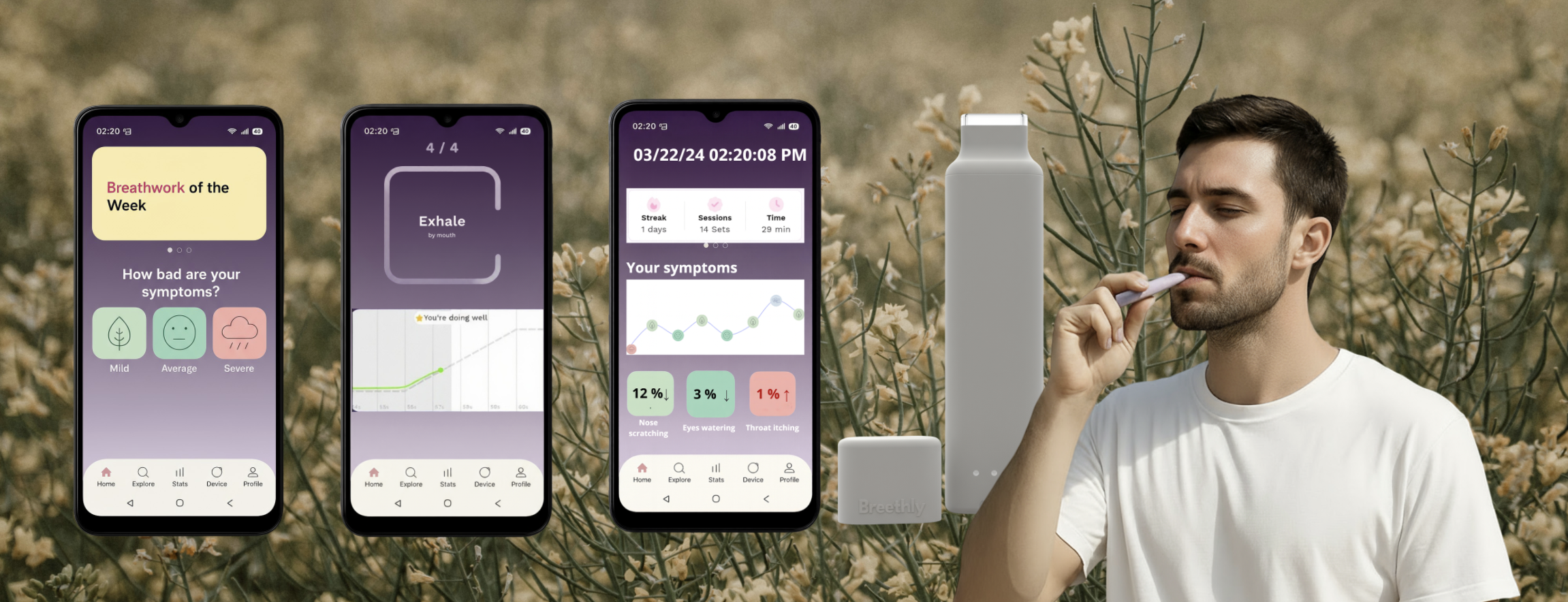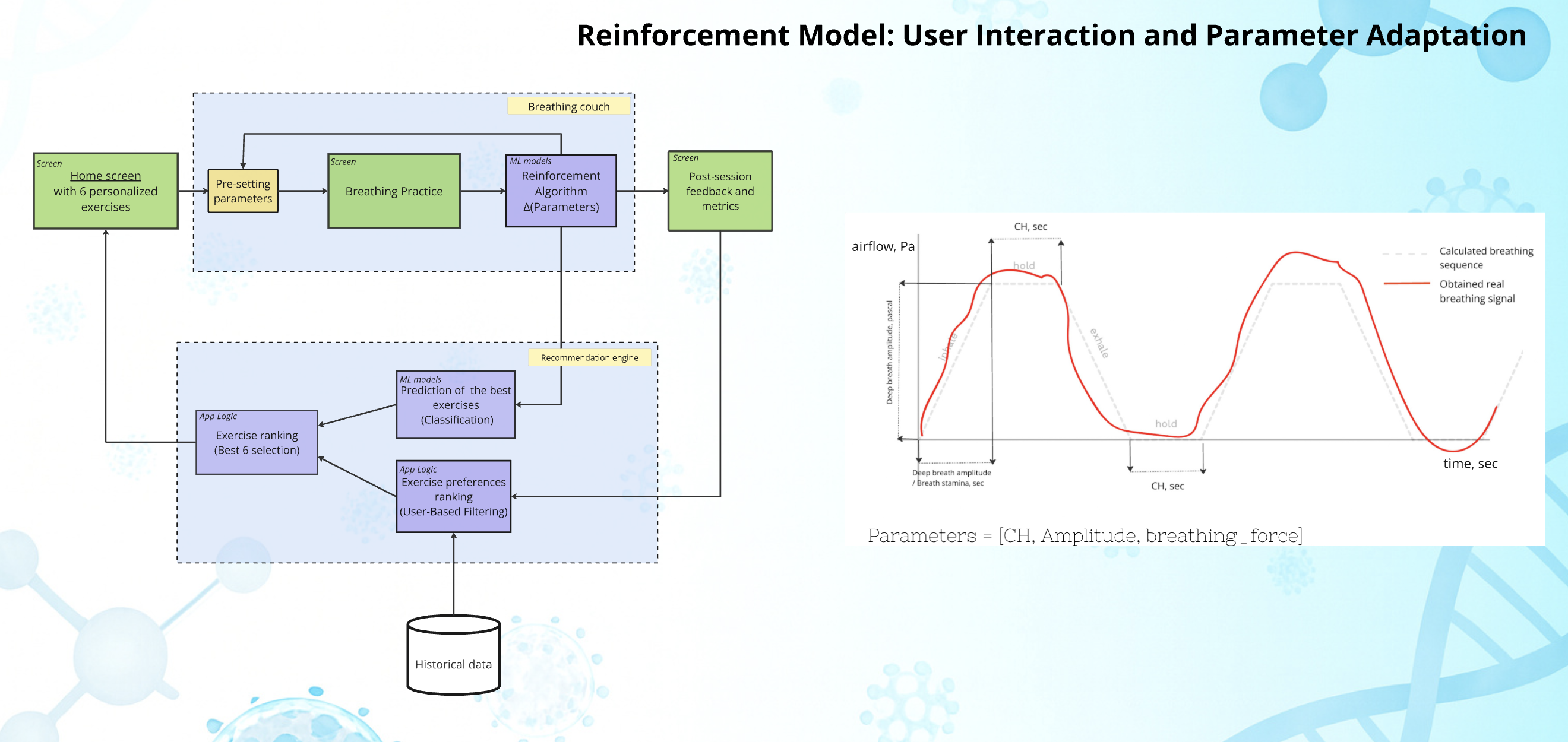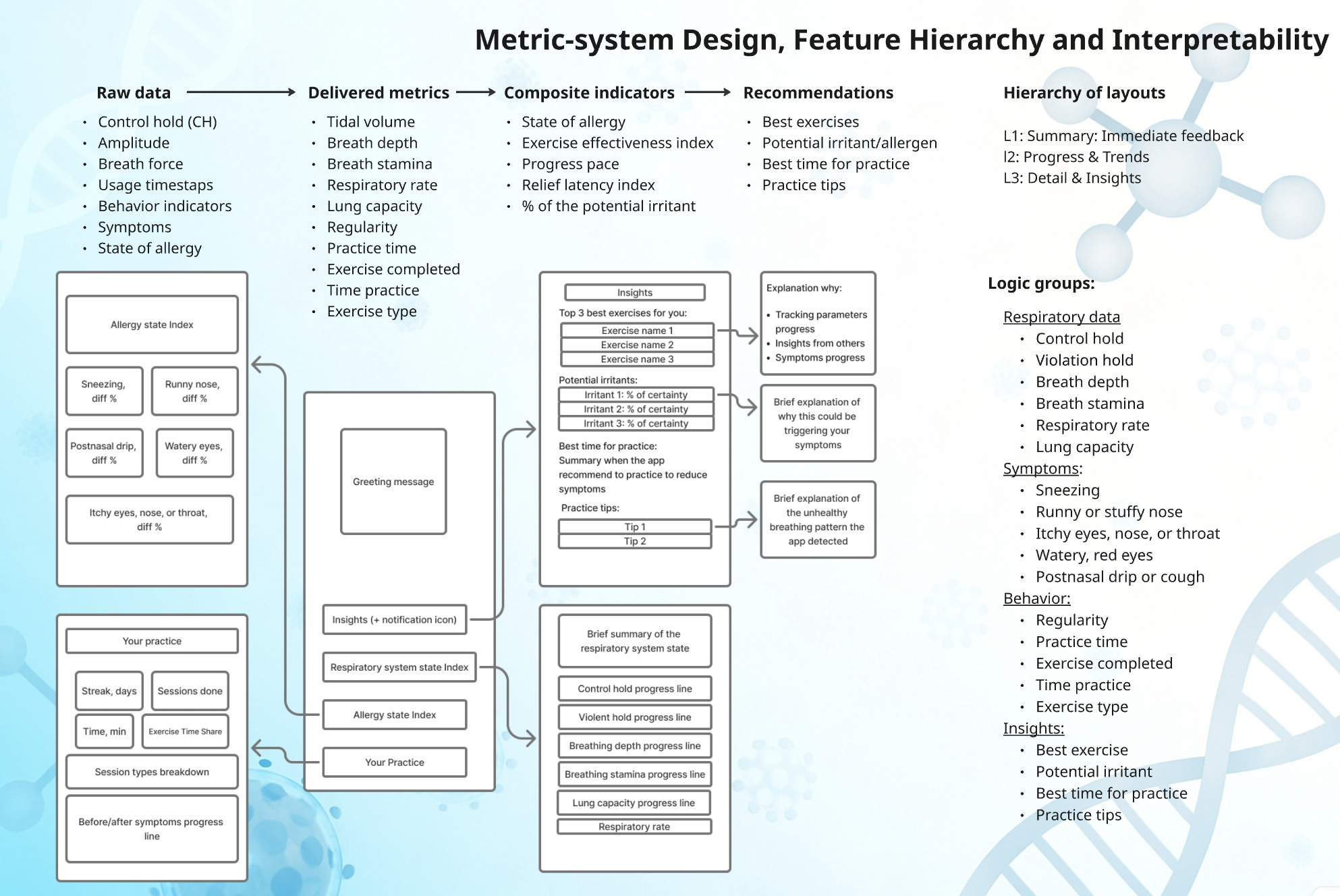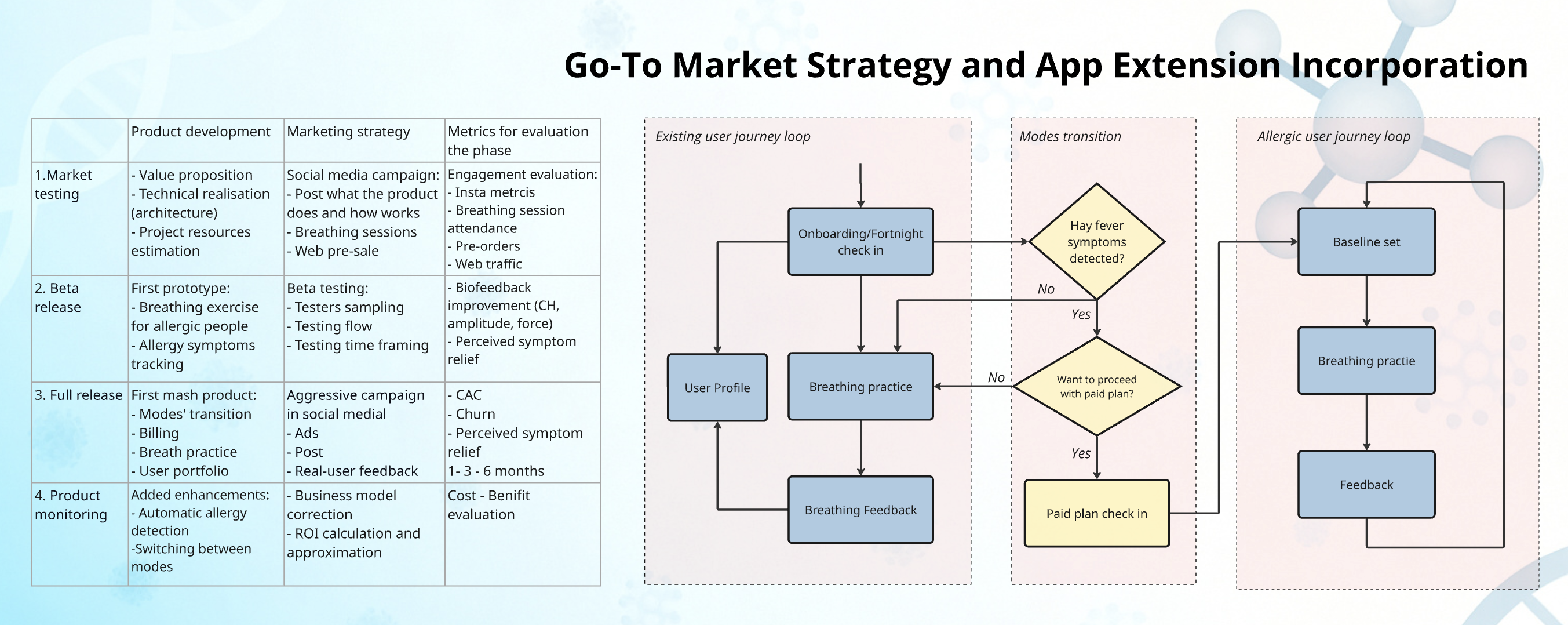Breethly
Head of AI Product
Jul 2025 - Present
The idea behind this project was to connect a physiological insight with a technical AI solution. When allergens enter the airways, they trigger irritation that creates the sensation of something “stuck” in the respiratory tract. This discomfort often causes people to breathe more quickly or deeply, even though the issue is irritation—not oxygen deficiency. Such irregular breathing further disrupts the natural rhythm, intensifying symptoms. The application I designed uses AI to analyze and gradually restore normal breathing patterns, helping users reduce symptoms by stabilizing respiratory rhythm through personalized, adaptive breathing exercises.
In the user journey (Pic. 1), the process begins with onboarding and device calibration to establish an individual baseline. Each breathing session generates new data that is fed into a reinforcement learning model, which dynamically adjusts three key parameters of breathing: control hold, amplitude, and breathing force. The system continuously learns from user performance to refine the next practice session. An integrated recommendation engine further personalizes breathing practices to maintain engagement and optimize therapeutic effects. On the right side of the diagram, a chart explains how the breathing signal is parsed and how the model interprets the parameters it receives for adaptation.
Pic. 2 demonstrates how users receive feedback: the raw signal from the user is processed into insights, composite indicators, and finally personalized recommendations. All metrics are logically grouped into subcategories and hierarchically mapped within the application to provide users with a structured understanding of their progress.
Given the project’s high level of market risk, implementation was closely aligned with the marketing team. The development roadmap was highly dependent on the success of marketing campaigns: only after validating user interest could the development phase proceed. The implementation plan was divided into four stages:
- market testing
- beta release
- full release
- product monitoring.
Each phase defined both the development scope and key marketing performance metrics.
Also Pic. 3 presents the application transition flow, illustrating the progression from the core concept to the product’s expansion strategy.



